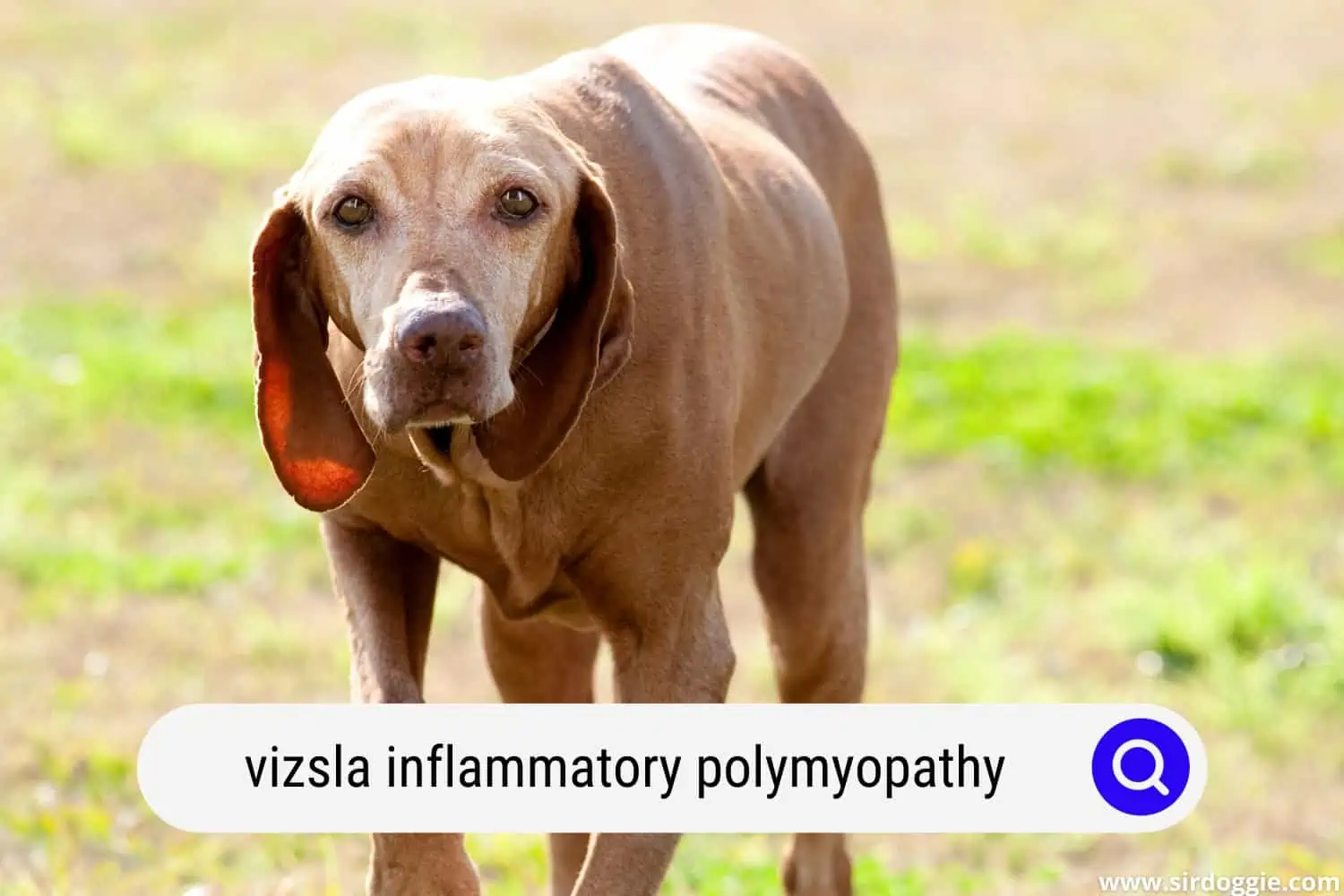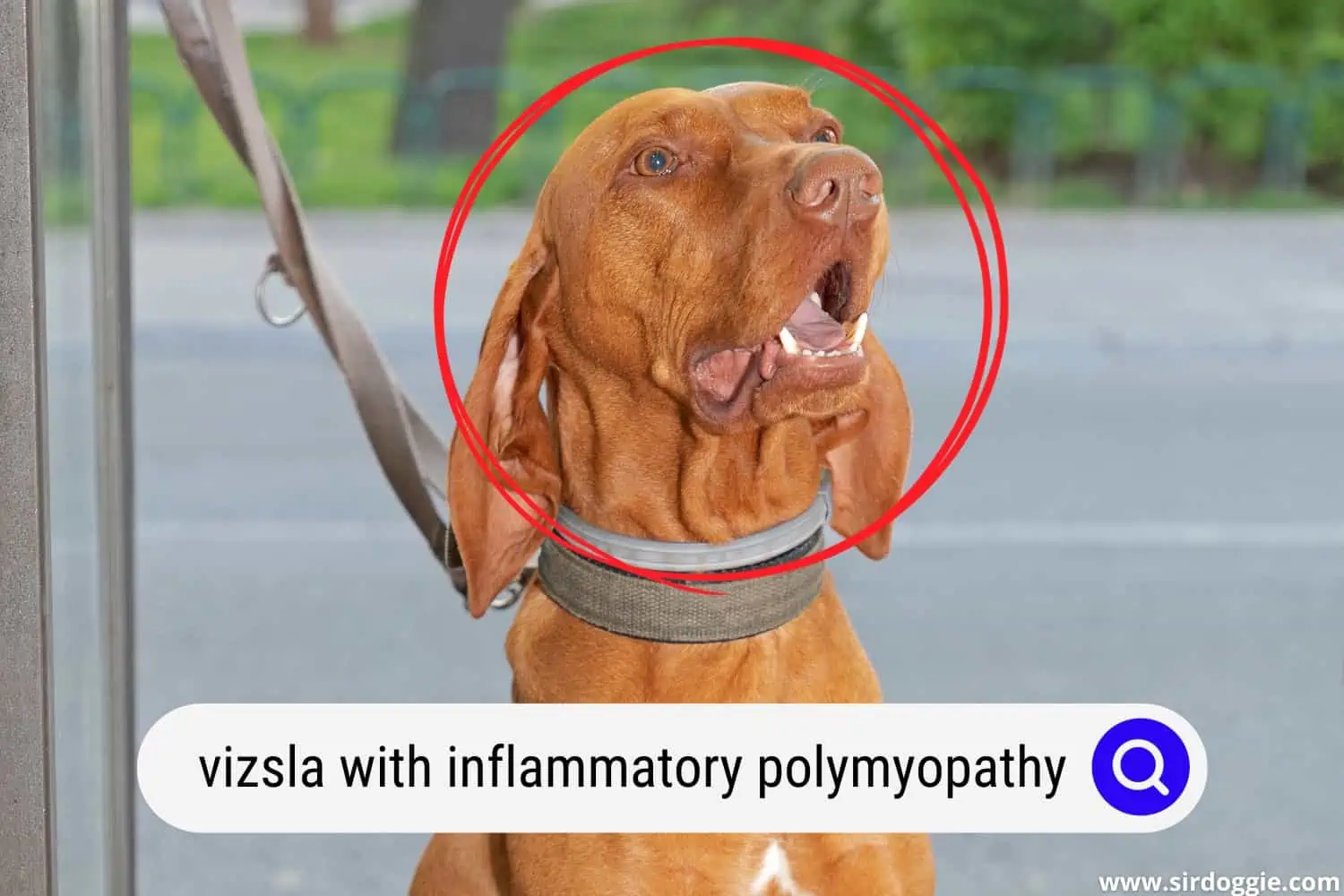Vizsla Inflammatory Polymyopathy: All You Need to Know
Vizsla breed dogs are extremely athletic and energetic animals. This pet is adored by its entire family and by those around it. In addition, it has a loving and fun temperament wherever it goes.

Normally, when people decide to adopt a dog of this breed, they make sure they know all its characteristics, as well as its pros and cons. The Vizsla has many interesting aspects that attract humans’ attention, such as its ability in sports and hunting, its loving personality, and its energetic attitude.
However, this dog can suffer from many inherited diseases, such as hip dysplasia, gastric torsion, constant allergies, and inflammatory polymyopathy.
What is Inflammatory Polymyopathy?
Inflammatory polymyopathy is known as a disease that affects the muscles and ultimately causes them to atrophy and progressively degenerate.
Polymyopathy is a rare myopathy in dogs and even rarer in cats. It can present different clinical and pathological expressions of primary inflammatory disease of the muscle.
Symptoms of Inflammatory Polymyopathy
The diagnosis is based on:
- Clinical signs.
- Increase in serum levels of muscle enzymes.
- Electromyographic abnormalities.
- Histopathological evidence of muscle necrosis and inflammatory cell infiltrates.
The diagnosis is:
- Definitive: if all disease criteria are present.
- Probable: if three of them are present.
- Suspicious: if only two are found.
Therefore, to consider that polymyopathy is idiopathic, it must meet one more criterion, which must not have positive titers for infectious diseases.
In general, the clinical signs are variable. They can appear acutely or chronically, which include:
- Claudication and stiffness when walking.
- Muscle inflammation.
- Change in phonation and depression.
- Vomiting and excessive salivation.
- Pyrexia.
- Weakness and rapid fatigue on walks.
- Pain.
- Muscular atrophy.
- Cervical ventroflexion. Commonly, this only occurs in some dogs.
- Pain after exercise.
- Reluctance to move.
Other common clinical signs are hypersalivation and atrophy of the chewing muscles.
Dysphagia and regurgitation caused by the megaesophagus are less common. However, if your pet were to develop regurgitation and aspiration pneumonia, it would be one of the most challenging cases to treat.
Muscle wasting around the dog’s skull, swallowing problems, and excess frothy drooling can also be included. If this is diagnosed early enough, the prognosis will usually be good, as it can be treated with immunosuppressive drugs.
Notably, in some dogs, muscle pain can come and go, while in others, muscle weakness can be a response to exercise rather than being frequently present.
For the most part, dogs with polymyopathy do not move much and are very weak. Although all of these symptoms sound like they should affect an old dog, many myopathy types manifest shortly after birth.
In summary, polymyopathy in young Vizsla dogs can often present with an acute episode of retching, suffocation, dysphagia, and, as mentioned before, hypersalivation.
What are the Causes of Inflammatory Polymyopathy in a Vizsla Dog?
The cause of inflammatory polymyopathy in a dog is not always known, although the disease’s responsiveness to immunosuppressive therapy suggests that the pathogenesis is immune-mediated.
That can affect many dogs. There is no preference for the breed, gender, and age. However, it is more common for this disease to appear in adult dogs.
Inflammatory polymyopathy can be secondary to parasitic diseases such as toxoplasmosis, neosporosis, ehrlichiosis, or various cancer forms (paraneoplastic syndrome).
On the other hand, inflammatory polymyopathy and myasthenia gravis have also been reported in many dogs.
Inflammatory polymyopathy has been reported in dogs with specific autoimmune diseases such as:
- Systemic lupus erythematosus.
- Immune-mediated polyarthritis.
- Primary lymphocytic thyroiditis.
Is There Any Treatment for Inflammatory Polymyopathy in the Vizsla Dog?
The mainstay of treatment is immunosuppressive therapy, in addition to feeding therapy designed to meet individual needs. Early diagnosis, careful monitoring, and progressive reduction in medication improve the prognosis.
Vizsla inflammatory polymyopathy has been seen especially in the UK but has also been reported in other parts of Europe and even in New Zealand, the USA, Australia, and Canada.
Vizsla inflammatory polymyopathy is believed to be immunologically mediated and on the hereditary basis of the family (siblings, for example) considered genetic, that is, inherited.
With prompt diagnosis and treatment, VIP (Vizsla inflammatory polymyopathy) can usually be well controlled with combined immunosuppressive protocols. Usually, Prednisone + Imuran (azathioprine) + gastroprotection are used, which serve as medications to gradually reduce the animal’s condition.
In addition, the treatment basically consists of taking care of the primary cause, and in the case of polymyopathy, it generally responds to treatment with corticosteroids, such as prednisone. This dose is reduced after the remission of the animal’s clinical signs and gradually decreases even after months, or it can also be kept at a minimum dose for life.
The prognosis for treatment in Vizsla is generally favorable if it is diagnosed early.
On the other hand, there are specialists who say that this condition has no treatment. However, symptoms of the disease are treated to try to minimize discomfort in the Vizsla. Dogs generally must be euthanized as this condition eventually has a severe impact on their quality of life.

Vizsla Inflammatory Polymyopathy Management Strategies
Unfortunately, Vizslas dogs with this type of genetically inherited disease do not have much hope of healing and generally need a lot of sleep. However, dogs with problems with their endocrine systems or primary conditions, such as those caused by ticks, have a chance to recover if the initial disorder is treated.
Animals with unregulated hormones often recover once hormonal disorders are treated as well. Veterinarians usually treat metabolic polymyopathies, such as lipid storage myopathy, with daily vitamin regimens to successfully eliminate symptoms.

Family Dog Expert Author
Hi there! I’m Stuart, a devoted dog lover and family dog expert with over a decade of experience working with our furry companions. My passion for dogs drives me to share my knowledge and expertise, helping families build strong, loving bonds with their four-legged friends. When I’m not writing for SirDoggie, you’ll find me hiking, playing with my beautiful dog, or studying music.